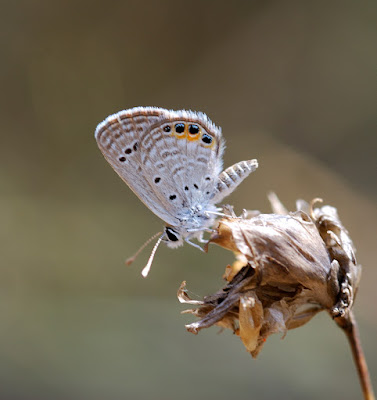The Purple Hairstreak is the only British butterfly that is solely reliant on the oak tree to complete its life cycle.It feeds mainly on honeydew produced by aphids normally high up in an oak or ash tree.Visits to flowers are not common.It is a handsome insect with flashes of purple on the uppersurface of the wings and an underside of silvery grey.

































